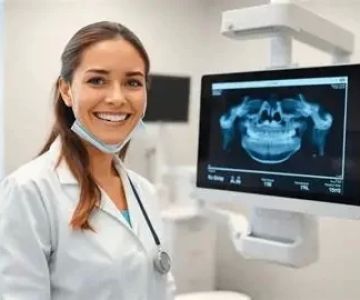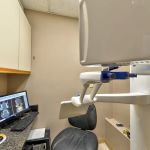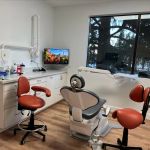- 1-Early-Signs-of-Oral-Cancer
- 2-Importance-of-Early-Diagnosis
- 3-Common-Diagnostic-Methods
- 4-Risk-Factors-and-Prevention
- 5-Patient-Experience-Real-Life-Cases
- 6-Caring-for-Patients-After-Diagnosis
1. Early Signs of Oral Cancer You Should Never Ignore
Recognizing the signs of oral cancer in early stages and diagnosis care is crucial for successful treatment outcomes. Oral cancer often begins with subtle symptoms that can easily be mistaken for less serious issues. Common early signs include persistent sores or ulcers in the mouth that do not heal within two weeks, red or white patches on the gums, tongue, or lining of the mouth, unexplained bleeding, or numbness in the oral tissues.
Additionally, difficulty chewing, swallowing, or moving the jaw, along with persistent pain or a lump in the neck, should raise concerns. These symptoms are often painless initially, which causes many individuals to delay seeking medical advice. Awareness and timely response to these signs can save lives by enabling early intervention.
2. The Importance of Early Diagnosis in Oral Cancer
Early diagnosis plays a pivotal role in improving survival rates for oral cancer patients. When detected in the early stages, oral cancer treatment tends to be less invasive, more effective, and results in better quality of life post-treatment. Unfortunately, many cases are diagnosed at later stages due to a lack of awareness or routine screening.
Healthcare professionals emphasize the value of regular dental check-ups and screenings as an essential part of early diagnosis care. Dentists can identify suspicious lesions or abnormalities during routine exams and recommend biopsies or referrals to specialists if needed. This proactive approach helps catch oral cancer before it progresses or spreads.
3. Common Diagnostic Methods for Oral Cancer
When oral cancer is suspected, a thorough diagnostic process begins. This typically includes a clinical examination of the oral cavity and surrounding tissues. Visual inspection under special lights or dyes can highlight abnormal cells that are not visible to the naked eye.
Biopsy remains the gold standard for diagnosis, where a small tissue sample is taken and analyzed microscopically to confirm cancer presence and determine its type and stage. Imaging studies such as CT scans, MRI, or PET scans may be used to assess tumor size and spread.
These diagnostic methods ensure an accurate and timely diagnosis, which guides the treatment plan and prognosis.
4. Understanding Risk Factors and Prevention Strategies
Knowing the risk factors for oral cancer can help individuals take preventive measures. Tobacco use, including cigarettes, cigars, and smokeless tobacco, is the leading risk factor. Heavy alcohol consumption also significantly increases risk, especially when combined with tobacco use. Human papillomavirus (HPV) infection has emerged as a major cause of certain oral cancers in recent years.
Prevention includes avoiding tobacco and limiting alcohol, practicing good oral hygiene, maintaining a healthy diet rich in fruits and vegetables, and protecting lips from excessive sun exposure. Regular dental visits for oral cancer screenings are highly recommended for at-risk populations.
5. Patient Experiences and Real-Life Cases
Real-life cases bring attention to the importance of early detection and diagnosis care. One patient shared their story of initially ignoring a small white patch on their tongue, which later was diagnosed as early-stage oral cancer during a routine dental exam. Thanks to early treatment, the patient underwent minimally invasive surgery and has since been cancer-free for years.
Such stories emphasize how vigilance and regular dental care can make a life-saving difference. They also shed light on the emotional journey patients face and the support needed throughout diagnosis and treatment.
6. Caring for Patients After Oral Cancer Diagnosis
After diagnosis, comprehensive care involves a multidisciplinary approach including surgery, radiation, chemotherapy, and supportive therapies. Post-treatment care focuses on managing side effects, restoring oral function, and improving quality of life.
Nutrition counseling, speech therapy, and psychological support are integral components of holistic diagnosis care. Close follow-up appointments help monitor for recurrence and manage any complications early.
Resources like Dentistry Toothtruth provide trusted information and recommendations for patients navigating oral cancer care, ensuring access to the best products and services tailored to their needs.







 Sony Thomas, DDS Arcadia Endodontics4.0 (8 review)
Sony Thomas, DDS Arcadia Endodontics4.0 (8 review) Dr. John P. Alley, DDS5.0 (3 review)
Dr. John P. Alley, DDS5.0 (3 review) Guerra Dental4.0 (293 review)
Guerra Dental4.0 (293 review) Dr. Joseph V. Esposito, DDS0.0 (0 review)
Dr. Joseph V. Esposito, DDS0.0 (0 review) The Modern Endodontist: Yarah Beddawi DDS | Root Canal Specialist in Mountain View and Los Altos4.0 (200 review)
The Modern Endodontist: Yarah Beddawi DDS | Root Canal Specialist in Mountain View and Los Altos4.0 (200 review) Growing Smiles of Voorhees4.0 (2464 review)
Growing Smiles of Voorhees4.0 (2464 review) The Importance of Oral Health Education During Pregnancy for a Healthy Pregnancy
The Importance of Oral Health Education During Pregnancy for a Healthy Pregnancy Best Tips for Brushing Your Teeth Properly for Healthy Gums: Essential Techniques for Oral Health
Best Tips for Brushing Your Teeth Properly for Healthy Gums: Essential Techniques for Oral Health Why Skipping Dental Checkups Can Lead to Bigger Oral Health Problems
Why Skipping Dental Checkups Can Lead to Bigger Oral Health Problems Advantages of Porcelain Dental Restorations
Advantages of Porcelain Dental Restorations How Can Diabetes Cause Tooth and Gum Problems? Preventing and Managing Oral Health Issues
How Can Diabetes Cause Tooth and Gum Problems? Preventing and Managing Oral Health Issues Healthy Habits for Promoting Good Oral Health and Hygiene: Tips for a Healthy Smile
Healthy Habits for Promoting Good Oral Health and Hygiene: Tips for a Healthy Smile